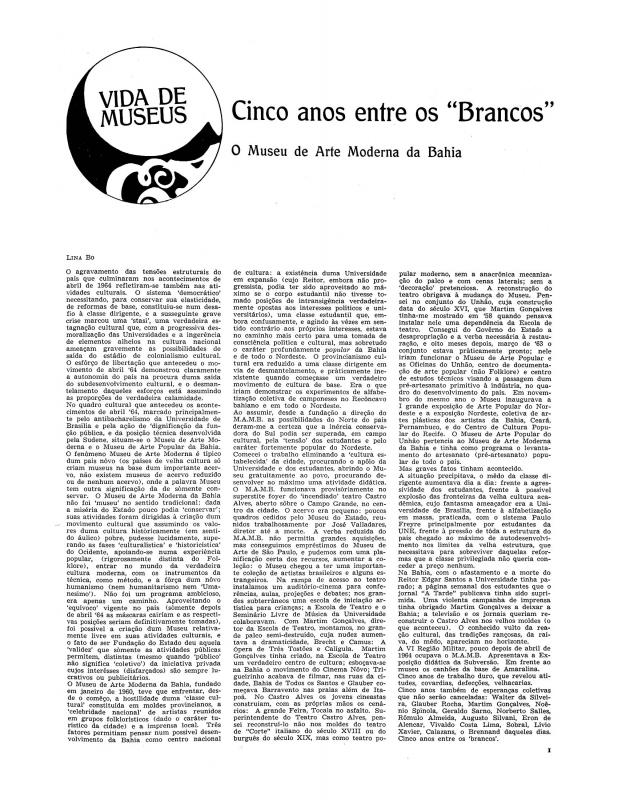Owner of the largest mass media conglomerate in Brazil, Italian-Brazilian Assis Chateaubriand (1892–1968) was one of the most influential public figures in Brazil in the forties and fifties. He was an important journalist, then a businessman, and he became a major player in the arts and in politics. Chateaubriand envisioned a project to modernize the culture of the state of São Paulo, where he was based. As outlined in this article, the next step in his project was to spread his ideas on art throughout the nation.
Assis Chateaubriand—along with Yolanda Penteado (1903–1983), coffee heir and wife of influential Italian-Brazilian industrialist Francisco (“Ciccillo”) Matarazzo—played an important role in establishing the Museu de Arte Moderna de São Paulo (MAM-SP). Starting in 1965, Chateaubrian and Penteado geared their efforts to opening regional art museums. The precedent for their work along these lines was the Museu de Arte Moderna da Bahia located in Salvador (capital of that state); the museum building was designed by architect Lina Bo [see the ICAA digital archives entitled “Bahia: Museu de Arte Moderna” (doc. no. 1111193) and “Cinco anos entre os ‘Brancos’” (doc. no. 1111192)]. As the director of the magazine HABITAT and the founder of the industrial design course given at the Instituto de Arte Contemporânea (IAC) housed at MASP, Lina Bo was also central to the infrastructure of the São Paulo museum.
During the same years (mid-seventies), the Museu de Arte Moderna de São Paulo sued to keep possession of the collection that Doña Yolanda Penteado had donated to the Museu de Arte Contemporânea da Universidade of São Paulo. According to art historian Maria Cecília França Lourenço’s account in the book Museus acolhem Moderno (2000), the museums that were party to the suit articulated time after time—often in newspaper articles—one of the project’s primary underlying principles, which was to form collections of Brazilian art that could tour the country that would facilitate artistic exchange between regions. In her view, the patently manipulative role played by the press under the leadership of Chateaubriand at his company Diários Associados was crucial to art patronage and to getting artists and their families to donate works. As part of the project, Chateaubriand intended to promote exhibitions of Brazilian art abroad.
For a later article that weighs the outcome of the regional museum project, see “Os museus regionais de Chateaubriand” (doc.no. 1111197).



